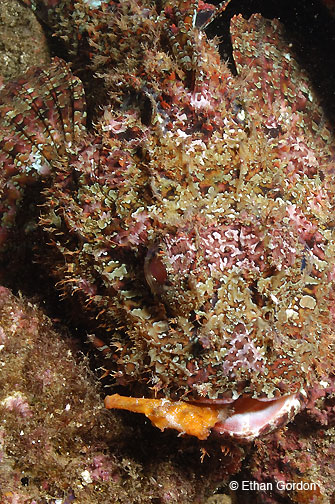![]() "A seahorse has got to
do what a seahorse has got to do"
"A seahorse has got to
do what a seahorse has got to do"
![]()
Pacific seahorses are always in competition for
space to live, food and mates. They are also predators, by eating
 small
crustaceans. But on the other hand, they are also prey for bigger fish
(flatheads, tuna, rods, trumpeters, snappers and perches), rays, crabs, penguins
and other birds that live near the water. These organisms classified as primary
consumers because they eat plankton or secondary consumers because they eat
little crustaceans that are primary consumers. Seahorses can not be on the top
of the food chain (or classified as tertiary consumers) because
they are eaten by bigger predators such as fish, rays and humans.
small
crustaceans. But on the other hand, they are also prey for bigger fish
(flatheads, tuna, rods, trumpeters, snappers and perches), rays, crabs, penguins
and other birds that live near the water. These organisms classified as primary
consumers because they eat plankton or secondary consumers because they eat
little crustaceans that are primary consumers. Seahorses can not be on the top
of the food chain (or classified as tertiary consumers) because
they are eaten by bigger predators such as fish, rays and humans.
Seahorses technically fall in love. They are monogamous and no
seahorse has been observed to leave its mate unless one dies. A female will stay put where as the male will take a risk and go search for a single female.
put where as the male will take a risk and go search for a single female.
Pacific seahorses also have encounters with humans. Humans have
destroyed the habitats of the seahorses and the seahorses are becoming extinct.
Seahorses have been over harvested for medicine, pet trade and food. In the past
in Europe, seahorses have been used for medicine purposes to treat fevers,
baldness, infertility, rabies and more. Today seahorses are being used over in
Asia to treat fatigue, throat infections, asthma, sexual dysfunction, skin
diseases, mental diseases and many more.
Pacific seahorses and seahorses in
general are expor ted all over the world. Thailand alone exports over 15
tons of dried seahorses per year and Vietnam exports about 5 tons.
Because of the over harvesting of seahorses for food, medicine and pets,
all seahorses are on the endangered list.
ted all over the world. Thailand alone exports over 15
tons of dried seahorses per year and Vietnam exports about 5 tons.
Because of the over harvesting of seahorses for food, medicine and pets,
all seahorses are on the endangered list.
Picture above taken by Ethan Gordon